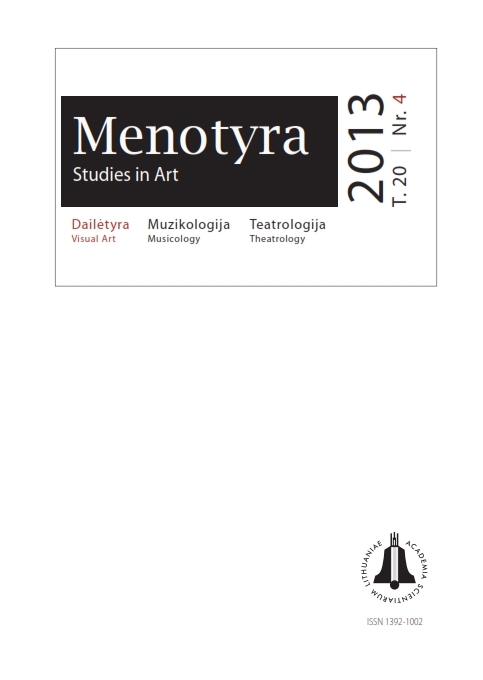Reconsidering figurative, graphic art of the 1950s Danish art scene. The Man exhibitions (1956-1959)
Reconsidering figurative, graphic art of the 1950s Danish art scene. The Man exhibitions (1956-1959)
Author(s): Liza Burmeister KaaringSubject(s): Fine Arts / Performing Arts, Visual Arts
Published by: Lietuvos mokslų akademijos leidykla
Keywords: Danish art; 1950s art; Post Second World War; Cold War; graphic art; figurative art; man; human situation; existentialism and art; the moment of realism
Summary/Abstract: The article contributes to a revision of today’s understanding of the 1950s Danish art scene. By presenting three exhibitions and analysing the reception of them, I point out that figurative art enjoyed a much more central role than later accounts have recognised. All three exhibitions were entitled Mennesket (Man), and featured figurative, graphic art, concerned with depictions of the human figure and with the post-war psychological condition of the individual human being. Among the artists were Palle Nielsen, Svend Wiig Hansen, Dan Sterup-Hansen and Henry Heerup. The exhibitions took place in the Copenhagen gallery Clausens Kunsthandel during the years 1956–1959 and attracted much attention and critical acclaim. In short, the artists’ intentions were to portray the human condition in a time which they considered unhappy, and their depictions of “the strange, seeking and divided <...> creature we call man” made many critics praise the artists for the relevance of their portrayals of the human situation. A more optimistic view was also represented, but it was the works by the so-called pessimists that resonated deeply with the art critics of the day. The pessimists’ interpretations were not only seen as expressions of the “correct” understanding of the time and its problems; they also lived up to expectations about engagement and truthfulness in art expressed by central figures in the field of art and culture, expectations which were attached to figurative, graphic art in particular. The article concludes that although the Danish ‘depictors of man’ have more or less been written out of Danish art history, they held a central position on the 1950s Danish art scene.
Journal: Menotyra
- Issue Year: 20/2013
- Issue No: 4
- Page Range: 324-341
- Page Count: 18
- Language: English

